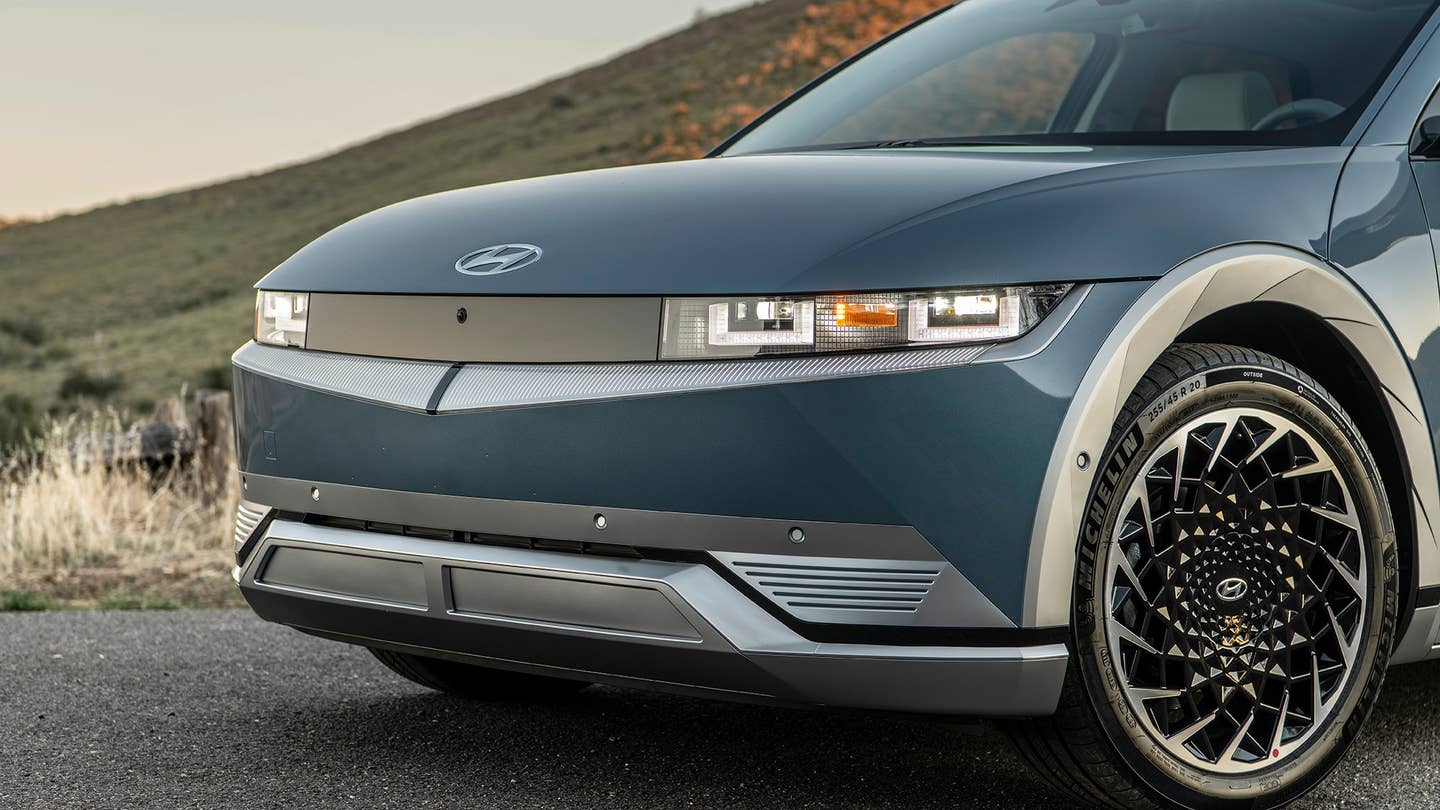Hyundai’s Self-Cleaning ADAS Camera Solves a Classic Autonomy Problem
Hyundai’s new rotating camera housing wipes away dirt from a car’s exterior cameras.

If you've ever driven in the middle of a heavy downpour without proper working wipers, you know how difficult it can be to see out of your windshield. Sure, hydrophobic coatings exist, but those can only do so much to clear water and debris from your line of sight. Much like our eyes, a modern car's exterior cameras have a hard time seeing through these adverse conditions.
That's a hard sell for automakers looking to push autonomy-based driver aids. From basic lane-keeping all the way up to "Full Self-Driving," manufacturers have been racing to put the most capable driver aids in cars for the lowest cost, and they primarily involve cameras. Now, Hyundai and Kia have unveiled a device that solves one of a camera-based Advanced Driver Assistance System's (ADAS) biggest drawbacks: vision blinded by superficial debris.
The tech to clean a camera isn't exactly new. The BMW iX, for example, uses pop-out sprayer nozzles to wash debris from the lenses of the front and back sensors. But these sprayers may not wash the debris from the lens in its entirety, and they also risk temporarily obstructing the camera's vision by occluding the lens with liquid, or perhaps water spots from improper drying.
Hyundai's approach is a bit different. To solve the problem, the automaker built a large encased unit that houses a camera behind a rotating housing. At the front of the housing is a glass lens that protects the delicate camera behind it. This glass lens is the part that takes the beating from the elements.
When the outer lens becomes dirty, it needs to be cleaned. That's no different than any other vehicle with an imaging sensor on the exterior of the car (including those with built-in cleaning mechanisms like the iX). Rather than simply spraying the lens and letting it air-dry, Hyundai's mechanism employs the use of a small wiper blade that runs across the surface of the exterior glass. When the car's software determines that the camera becomes blocked due to debris, it will first spray the lens and then rotate only the outermost lens while the wiper remains stationary. This allows the wiper to act like a squeegee, dislodging debris and wiping off water for a clearer picture of the vehicle's surroundings.
Hyundai's method seems like such a simple solution to a problem that so many camera-equipped vehicles have faced thus far, that has yet to be solved. And we're not just talking backup cameras, either. As vehicles are advancing in technology, automakers across the globe are in a race to find a way to build cars that drive themselves—or, at least build a car that can lift the bulk of responsibility off of the driver.
That feat has proven to be incredibly expensive for OEMs, especially since tier-one components like lidar sensors can cost thousands of dollars. Vision-based sensors are significantly cheaper, but they come with a number of downsides. Alone, monocular cameras can't provide native depth measurements—it's like closing your eyes and trying to grab something in front of you. That means vehicles have to be equipped with multiple cameras in order to sense depth accurately. This solution is still cheaper than cramming a car full of lidar and high-definition radar sensors, though.
A downside of vision-only-based systems is overall accuracy. Tesla, for example, has been trying to solve self-driving for the better part of a decade almost exclusively with a vision-based sensor suite. In fact, CEO Elon Musk has called lidar, an industry staple of the autonomous vehicle industry, a crutch. However, Tesla's vision-based vehicles often fall victim to camera occlusion due to water droplets, dust, and debris that block the sensors from doing their job.
Now, it's important to note that Hyundai's new tech is just a concept at this point. The automaker has built working models but has yet to put them through a series of tests to determine if they're both reliable and durable enough to make it to market. Should the system seem viable enough, it could prove to be a huge step forward for automakers looking to break down the barriers between Level 2, Level 3, and Level 4 ADAS systems using cameras alone.
Got a tip or question for the author? Contact them directly: rob@thedrive.com
